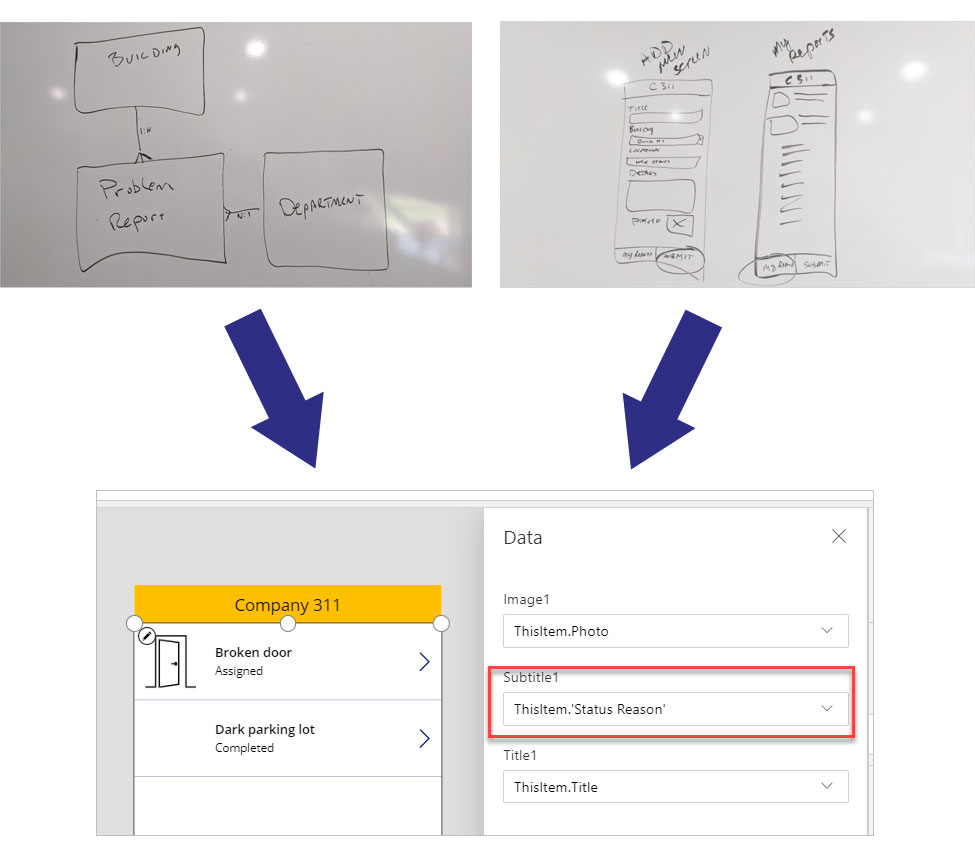The Developer Is Dead! Long Live the Developer!
The roles of developers as we know them are not dying, but they are shrinking in their numbers. Does that sound crazy? I know, but it’s not, and here’s why. You see, the developer, as we’re used to thinking about them, has already evolved over time from the role Software Engineer—you know, that person with the CS degree that we either are or know whose role has changed in the company over the past 20 years. Initially, they were the person solving problems for companies using programming languages, like some version of C++ or C#. They use methodologies like Agile or Scrum. Then they seemed to be doing a lot more with Java and JavaScript. They’re constantly taking on more and more of the needs of the company but never having enough time to do everything we want from them.
And now everyone is getting in on the “developing” game. Kids born in roughly the last quarter century don’t remember a time before user generated video game mods. They’ve grown up creating their own mods to Minecraft and other games. We’ve gone past hacking our DVRs to building our own Raspberry Pi IoT controllers to make our own arcade games, programming our own home automation, and more. And it’s not just the people with Computer Science degrees. If you haven’t done something like this yourself, then I’ll bet you know at least one or two people who have.
Citizen Developer
The change in mindset stems from thinking about developers as this sort of “other” person. Highly skilled programmers have changed in the past 5 years. A lot. People today, from nine or ten years old and up, are creating or hacking their own code in a variety of ways. It is much less about knowing specific programming languages and much more about not being afraid to try something, to play around with it. This has created the birth of what we now call “citizen developers”: people who aren’t afraid to try something to see if they can solve the problem themselves. With all of the support platforms online, it’s no wonder that fewer and fewer people are waiting for someone else to solve those pesky little day to day issues that come up in their lives. Heck, sometimes that’s even how tech billionaires are made!
In 2016, Microsoft released Power Apps, and it has really taken off in a big way. Power Apps has what is referred to as a “low code”option where people with minimal programming experience or knowledge can develop Web apps for computers and mobile devices. In their own words, it is a “suite of apps, services, connectors, and data platform that provides a rapid application development environment to build custom apps for your business needs.” Power Apps and other low code platforms are changing the way that we work in much the same way that that spreadsheet software, such as Microsoft Excel, has changed the modern workplace—and there’s no going back. The genie is out of the bottle, and once you learn a tiny bit, you won’t want to put it back.
The New Age of Apps in the Workplace and, Well, Everywhere
How often have you been frustrated by something seemingly small that there just doesn’t seem to be a solution to? I don’t mean that coworker who refuses to clean the microwave after using it. I mean your boss tells you that they want you to start gathering information from the seven buildings that make up your company’s operations in this country so that you can track maintenance requests. You have to put them in a spreadsheet and call the site managers of each location to determine when and how maintenance problems are getting addressed. As you start gathering information, you realize that this is no easy task, because each site’s site manager has a different process, and some of them make no sense to anyone but them. What a nightmare! If only there was software that could automate that and pool all of the data so that you could run reports for your boss on demand. Well, you know there is, but that sort of software is expensive, like Maserati expensive. But what if you could build something—simple at first, but that you could expand when you have time later? What if it started by creating a singular way to log maintenance requests, log the maintenance work, and log the results? What if everyone could access it easily from work or home, and you could run reports in it like you already do in other areas with Microsoft Dynamics?
Enter the citizen developer. Their attitude that, “If it sounds simple, and you understand what goes into making up the data elements of the problem, then you can build an app to do it much the same way that some whiz bang go-getter in 1995 was building spreadsheets to solve problems.” By storing, organizing, and presenting data, you are that whiz bang person today. That’s right. And this is something that you can do to solve problems at home, at work, for your religious community, non-profit where you volunteer, or wherever else there are simple problems that need solving.

It really can be as simple as drawing out what you need to track and building the interface in a Web-based environment with minimal or even no scripting. Once you get more comfortable with Power Apps, you can add scripts or use features like Flow to automate tasks. Then you can start running monthly or quarterly reports that are emailed, as if by magic, to your boss. Or creating a smartphone-optimized interface for anyone in the company to be able to submit maintenance requests and even track them. Your boss will be thrilled.
Don’t get me wrong, it isn’t merely simple tasks that can be solved in Power Apps. There are complex apps and entire environments being built here. The main requirement is that it is housed in Microsoft Azure. One example of a complex website built this way is The JFK Files. It uses Power Apps to leverage the dynamism of the Azure cloud environment. The actual breadth and depth of the site is pretty amazing. The site utilizes varied data sources to analyze pictures using facial recognition capability, analyzes complex search algorithms, and more.
I encourage you to play around on the site and think about what the different functions are doing and how that function could be applied to things in your work or just in your life in general.
The Future of Software Development
If you haven’t already started thinking about what you could do to simplify your job or some other aspect of your life with Power Apps, then stop and ask yourself what sort of data modeling and reporting would you do if you could plug into almost any type of data source? I mean from Adobe to Zendesk and just about everything in between. And, yes, that list includes YouTube. There are hundreds of existing connectors, and if what you want doesn’t exist, you can learn to create your own and even post it. Your connector could help others and build cred in the Microsoft tech sphere and on your resume. This is really big, and your limitations could simply be your own imagination. What’s more, since anything you build in Power Apps is built within a standardized environment, if you get promoted out of your job to VP of Site Operations, you can make sure that the person hired to take over for you can easily manage the apps you built and can continue expanding them. That way you can continue helping your company to advance into the new decade. Now are you thinking about what you could do with Power Apps to simplify your job or other aspects of your life? I bet you are!
So, is the developer really dead? No, but the role has evolved, thanks to tools like Power Apps, and it looks very different than it did just ten years ago. Power Apps is technology that you can use to really stand out, too. Smart hiring managers that see Power Apps listed in the special skills section of a resume are increasingly putting that resume on the top of the pile. You do not have to change careers to be a developer any longer. Simply put, if you see using spreadsheets as a simple way to put information together, get answers, and maybe even solve problems, then you can be a citizen developer—regardless of whether your title is Customer Service Manager, Administrative Assistant, Bookkeeper, or Site Operations Manager.
If you want to talk to a Microsoft Expert about Power Apps, we’re here to help. Get in touch with Connection today!

